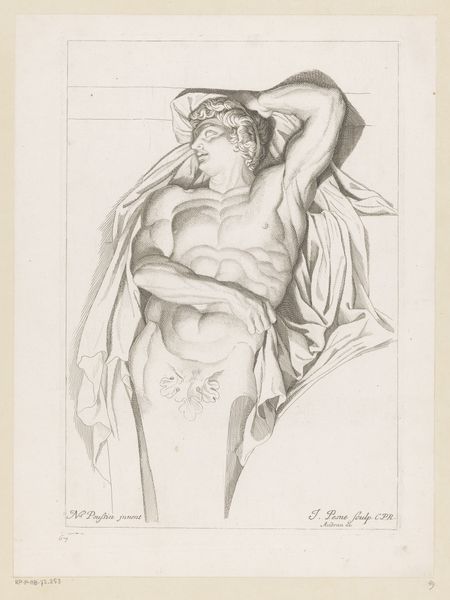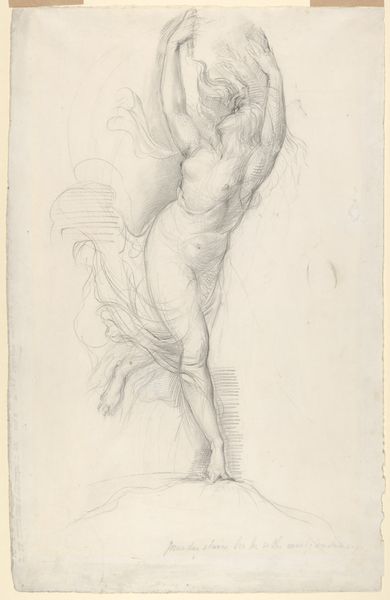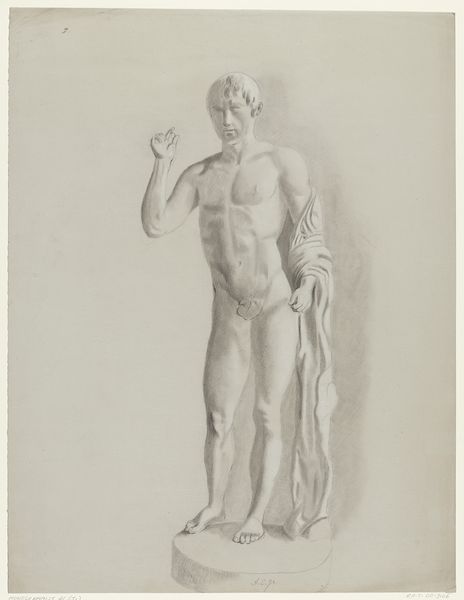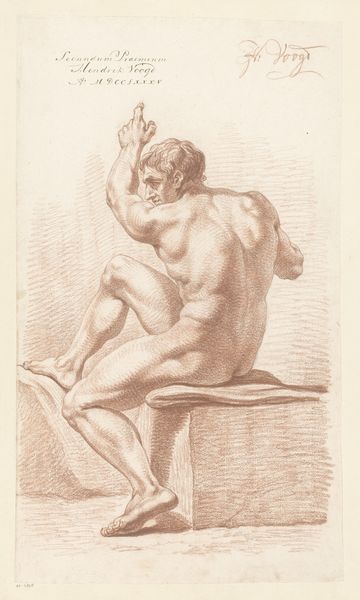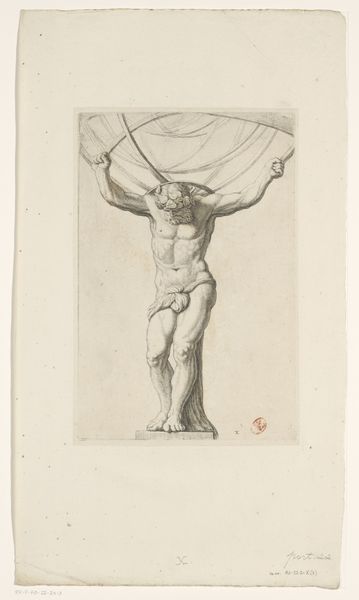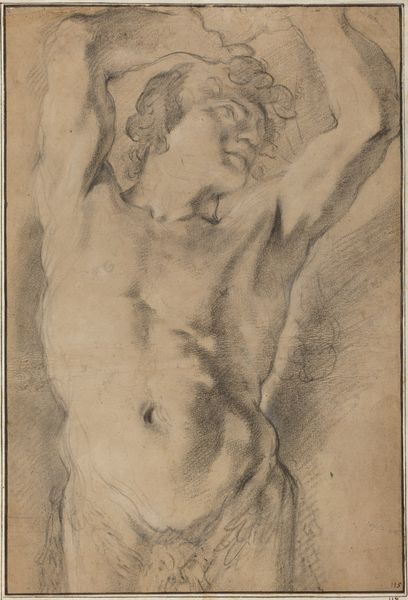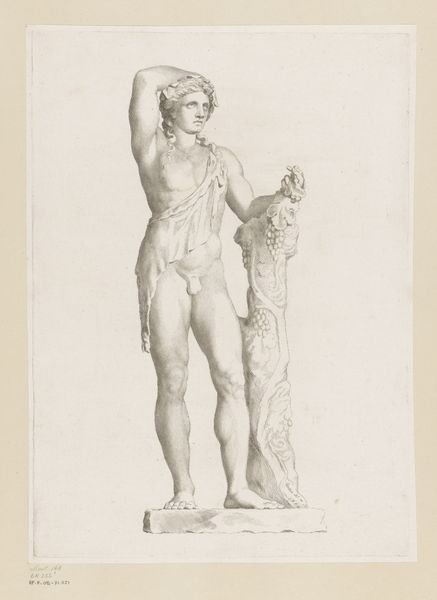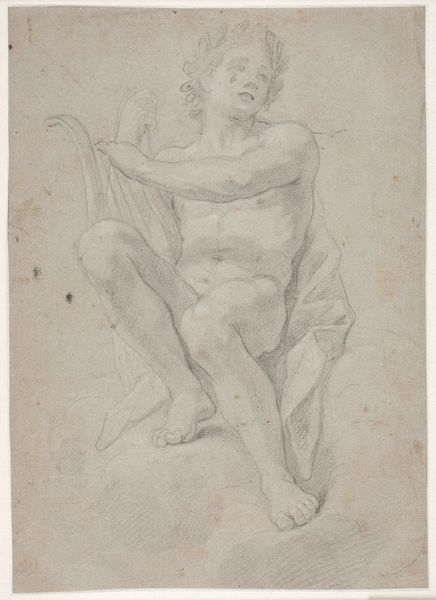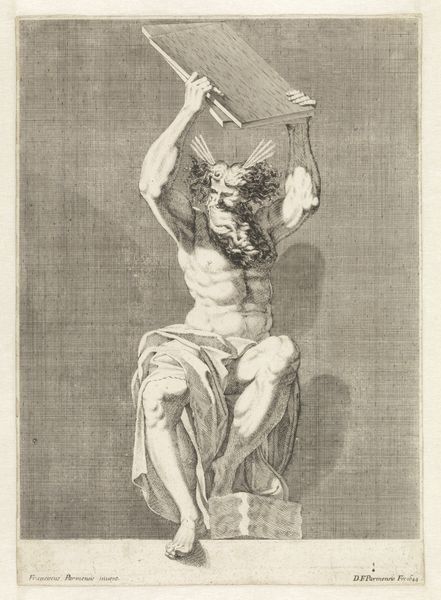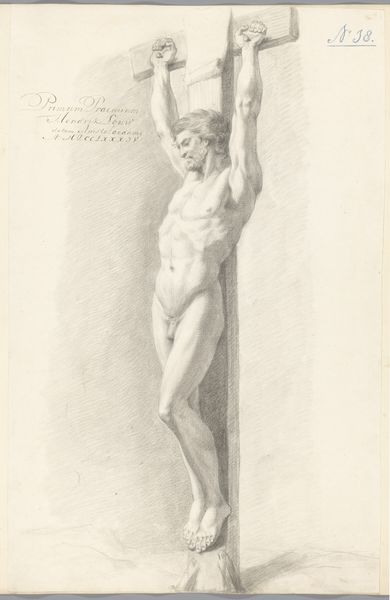
print, engraving
#
baroque
# print
#
figuration
#
nude
#
engraving
Dimensions: height 438 mm, width 300 mm
Copyright: Rijks Museum: Open Domain
Editor: This is Jean Pesne’s “Atlant,” an engraving from 1678 at the Rijksmuseum. The figure, seemingly supporting an architectural element, feels quite dynamic despite the static medium. What do you notice when you look at this work? Curator: Initially, the pronounced musculature draws the eye. Pesne masterfully employs line to define form, creating a palpable sense of tension and strength. Consider how the drapery both conceals and reveals, playing with light and shadow to emphasize the figure’s contours. What is particularly striking is the tension between the figure and the architecture it supports; notice how Pesne uses the clean lines of the structure to offset the organic fluidity of the body. Editor: So it's more about how the elements relate to each other visually, not necessarily the story being told? Curator: Precisely. Observe the strategic use of hatching and cross-hatching. Pesne employs these techniques to not only model form, but also to create textural contrast – the smooth skin of the Atlant against the rough texture of the supporting structure. What effect does this contrast produce? Editor: I see what you mean. It makes the figure almost leap off the page. The way the light catches the muscles, contrasted with the flatness of the architecture, gives it so much depth. I always think of prints as being a bit…flat, but this has a real sculptural quality. Curator: Indeed. Through close examination of these intrinsic qualities, we arrive at a richer understanding of the work itself. Pesne challenges the limitations of engraving through the effective manipulation of tone and line. Editor: It’s amazing how much you can discover just by looking closely at form and composition. Thanks!
Comments
No comments
Be the first to comment and join the conversation on the ultimate creative platform.

